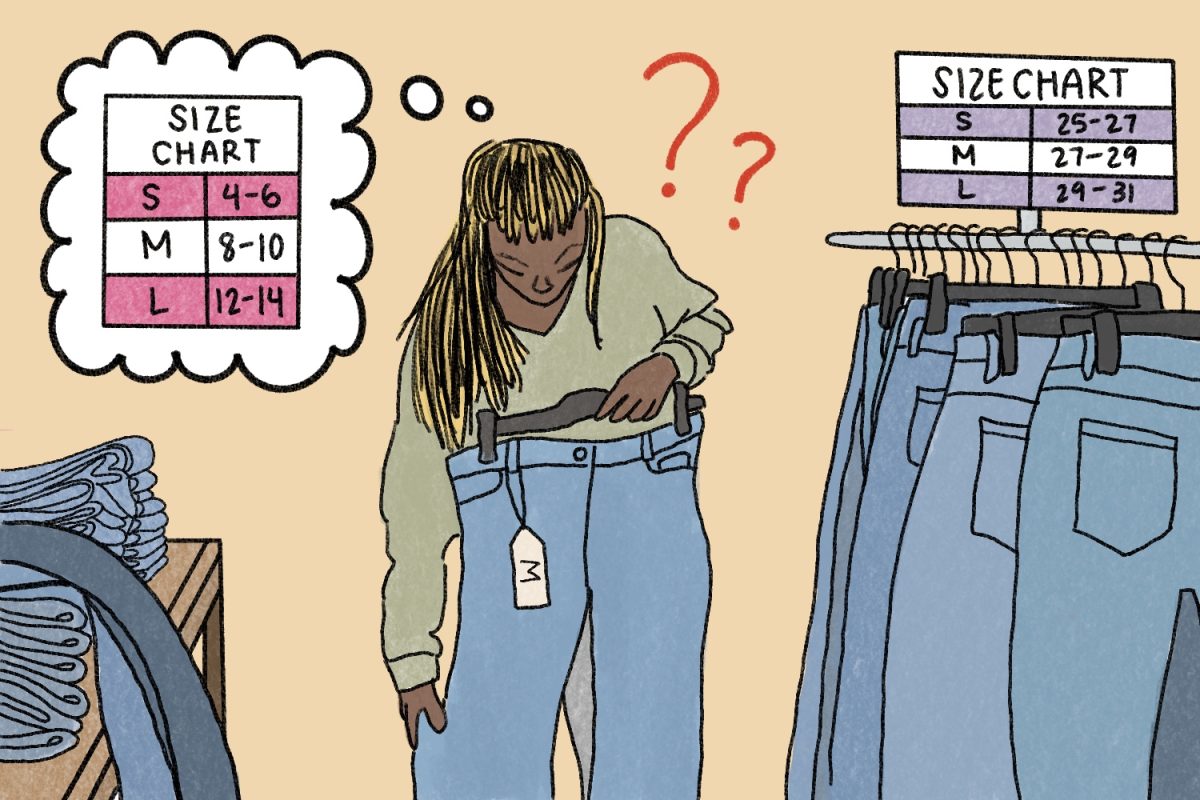One size fits all is possibly one of the most universally disagreed with statements. But what about one size is not the same?
Over time, the average size of an American has increased, yet sizing has decreased. A size-8 from 1967 is now a size-00 today, although that number has fluctuated over the years to get where it is today.
Over a decade ago, vanity sizing was defined by Forbes as “the labeling of clothes with sizes smaller than the actual cut of the items.” Although the article is a little dated, the definition and practice are certainly not.
The practice of vanity sizing ruins the chances of consistency across brands, as many stores size their products down to keep consumers satisfied. The psychological trick creates a positive connotation between the customers and the product, thus encouraging them to continue purchasing items from that brand. Regardless, it creates misleading sizes as a person could be one size at one store yet a different size at another.
Having sizing inconsistencies across multiple different brands creates confusion amongst customers and makes it harder to shop both online and in person.
Online, consumers often rely on sizing charts to help them determine which size to buy. However, companies do not always provide them nor are they always accurate. According to Statista, 75% of online shopping returns made in 2022 were because the item didn’t fit.
It should not be so difficult to shop online just because sizing is unreliable. Returning items not only costs money but also time. If you’re under a time crunch, forget it. The best option is just to go in store and try items on for yourself.
Shopping in stores is a completely different problem. Although one could argue that it’s easier to find your size, trying items in-store is still another hurdle in itself. Although you can accurately estimate your size most of the time, there is never certainty that the same size will fit you perfectly in every store.
“I always try on four pairs of a size-8 jean in the same brand because they all fit differently,” said Ruth Hartman, chief merchandising officer of Le Tote in an interview with Time.
A 2023 study by Coresight Research found that pants are the most likely returned item for 65% of respondents.
This problem is clearly rooted in sizing differences across stores. One store could list a size small as a size-2, while another lists it as a size-4. Sizing charts are largely dependent on a company’s fit model, who is supposed to match “industry standards” for sizing so the clothing can be accurately sized.
However, fit models are not the same across companies. Fit models are designed to reflect the bodies of target consumers, so one company could use a teenage fit model versus an adult fit model, making the sizing completely different.
To create a universal sizing system, companies should use the same fit models and sizing charts to make it easier for customers to find the right size. Although it is much easier said than done, stores should be working harder to make shopping an easier experience for everyone.
*This editorial reflects the views of the Editorial Board and was written by Elizabeth Cruz. The Editorial Board voted 12 in agreement, 1 somewhat in agreement, and 2 refrained from voting.













